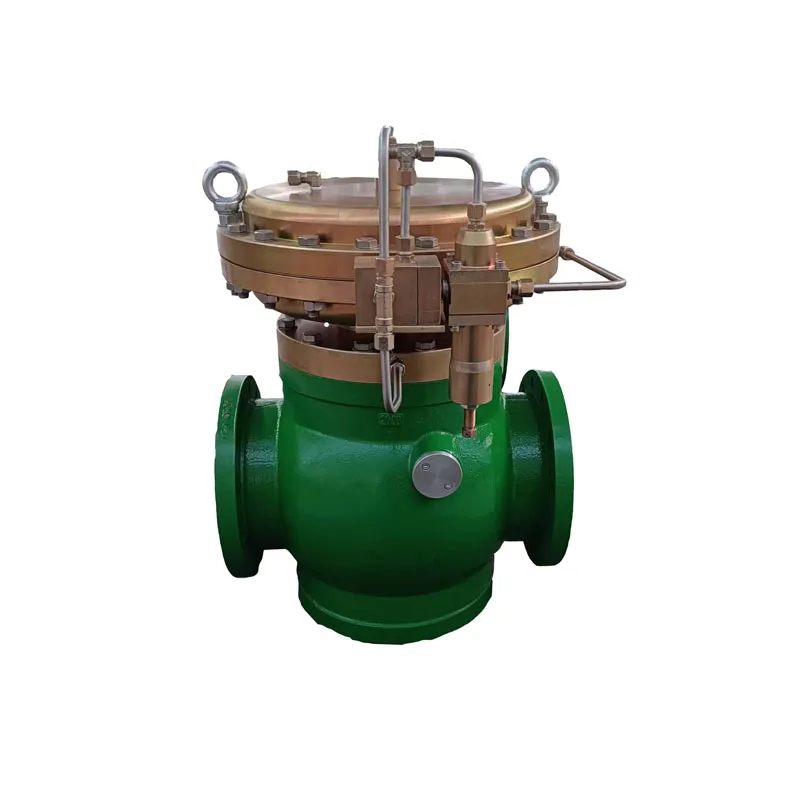
Dec . 18, 2024 15:29
Back to list
Understanding the Importance and Functionality of Pressure Relief Valves in Safety Systems
Understanding Safety Valves Ensuring Industry Reliability and Safety
Safety valves are crucial components in various industrial applications, designed to protect equipment and personnel from the hazards of overpressure. Their primary function is to release excess pressure in systems where uncontrolled pressure build-up could lead to catastrophic failures. This article explores the importance, types, operation, applications, and maintenance of safety valves, highlighting their role in maintaining safety standards across industries.
Importance of Safety Valves
The significance of safety valves cannot be overstated. In many industrial settings, such as petrochemical plants, power generation facilities, and manufacturing plants, pressure vessels and piping systems operate under high pressure. If this pressure exceeds safe levels due to equipment malfunction or process upsets, the consequences can be severe, including explosions, structural collapse, or catastrophic leaks leading to environmental disasters. Safety valves serve as a failsafe, ensuring that any excess pressure is promptly released, thereby preventing accidents and protecting both human lives and property.
Types of Safety Valves
There are several types of safety valves, each designed for specific applications and pressure ranges. The most common types include
1. Spring-Loaded Safety Valves These are the most widely used safety valves, featuring a spring that holds the valve closed until a preset pressure is reached. Once this pressure is exceeded, the valve opens to release the excess pressure.
2. Pilot-Operated Safety Valves These valves use a small pilot valve that controls a larger main valve. Pilot-operated valves are particularly suited for high-pressure applications due to their ability to operate with less leakage.
3. Thermal Relief Valves Specifically designed to prevent pressure build-up caused by temperature increases in fluids, these valves allow for the discharge of fluids when temperatures rise excessively.
safety valve

Operation of Safety Valves
The operation of a safety valve is relatively straightforward. Each valve is set to open at a predetermined pressure level, known as the set pressure. When the system pressure equals or exceeds this level, the valve opens automatically, allowing fluid or gas to escape and thereby reducing the system pressure back to safe levels. Once the pressure drops below the set point, the valve will close again, sealing the system.
Applications of Safety Valves
Safety valves are used across a wide range of industries. In the oil and gas sector, they protect pipeline systems and storage tanks from overpressure situations. In power plants, both thermal and nuclear, safety valves are critical for the safe operation of boilers and reactors. Additionally, safety valves are employed in the pharmaceutical and food processing industries to protect storage vessels and ensure safe production processes.
Maintenance of Safety Valves
Regular maintenance and testing of safety valves are essential to ensure their reliability and functionality. Industry best practices recommend periodic inspection to check for signs of wear, corrosion, or damage. Routine testing should also be conducted to verify that the valves open and close at the designated pressure settings. Proper maintenance not only extends the lifespan of the valve but also ensures compliance with safety regulations.
Conclusion
In summary, safety valves are indispensable safety devices that play a vital role in protecting industrial systems from the dangers of overpressure. Understanding their operation, types, and maintenance requirements is essential for engineers, operators, and safety professionals. By prioritizing safety valve installation and maintenance, industries can significantly reduce the risk of accidents, ensuring a safer working environment for all involved. As industries continue to evolve, the importance of maintaining high safety standards through effective pressure management remains paramount.
Latest news
-
Safety Valve Spring-Loaded Design Overpressure ProtectionNewsJul.25,2025
-
Precision Voltage Regulator AC5 Accuracy Grade PerformanceNewsJul.25,2025
-
Natural Gas Pressure Regulating Skid Industrial Pipeline ApplicationsNewsJul.25,2025
-
Natural Gas Filter Stainless Steel Mesh Element DesignNewsJul.25,2025
-
Gas Pressure Regulator Valve Direct-Acting Spring-Loaded DesignNewsJul.25,2025
-
Decompression Equipment Multi-Stage Heat Exchange System DesignNewsJul.25,2025

